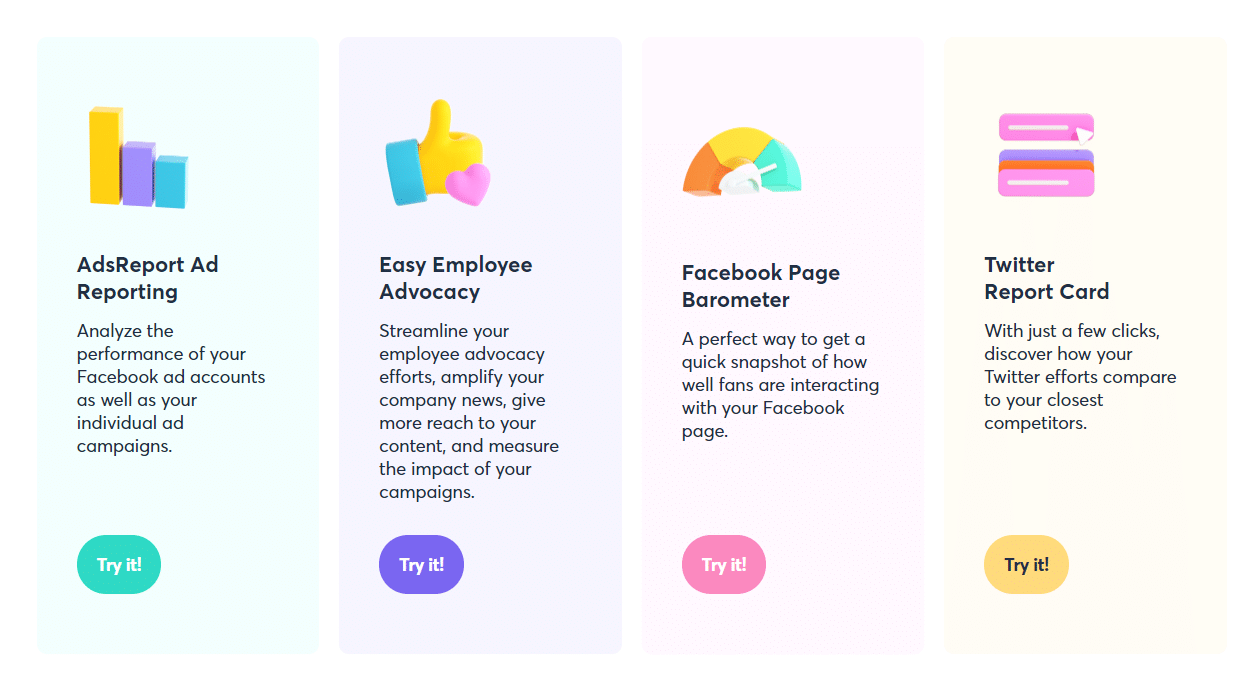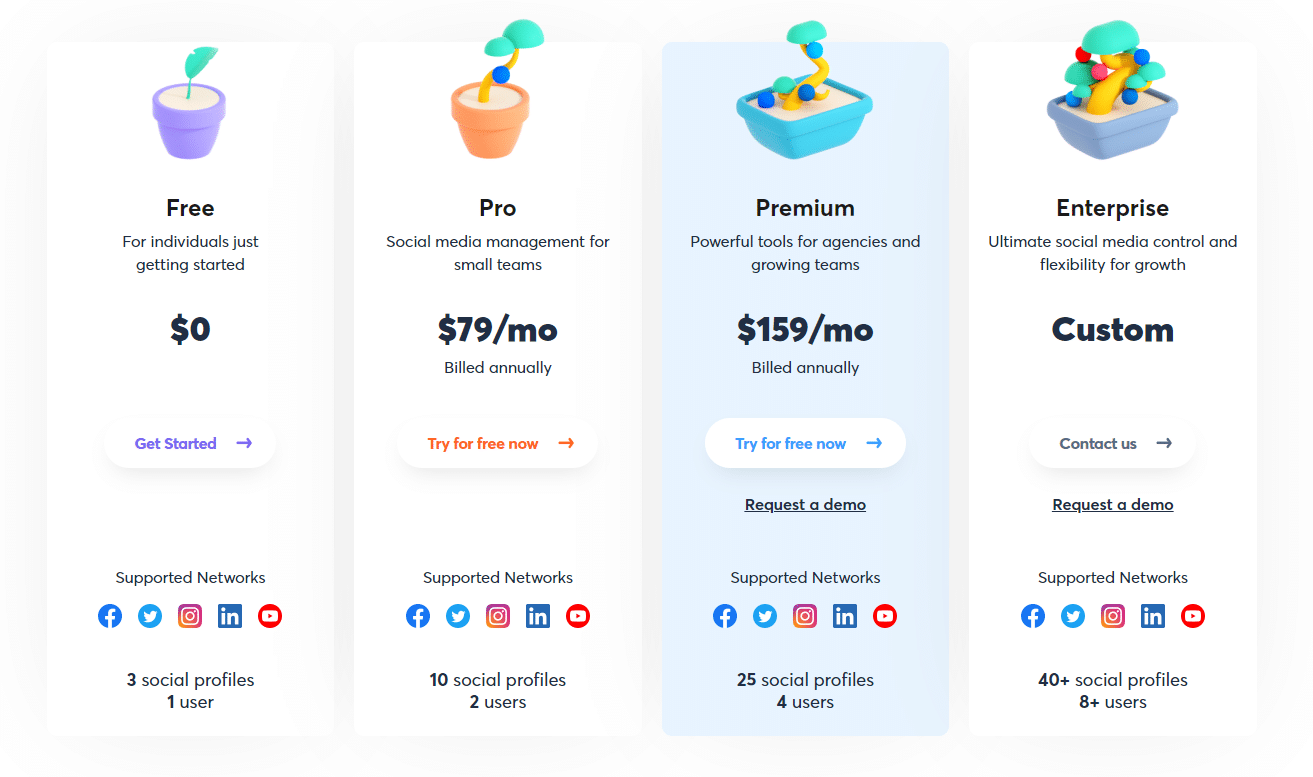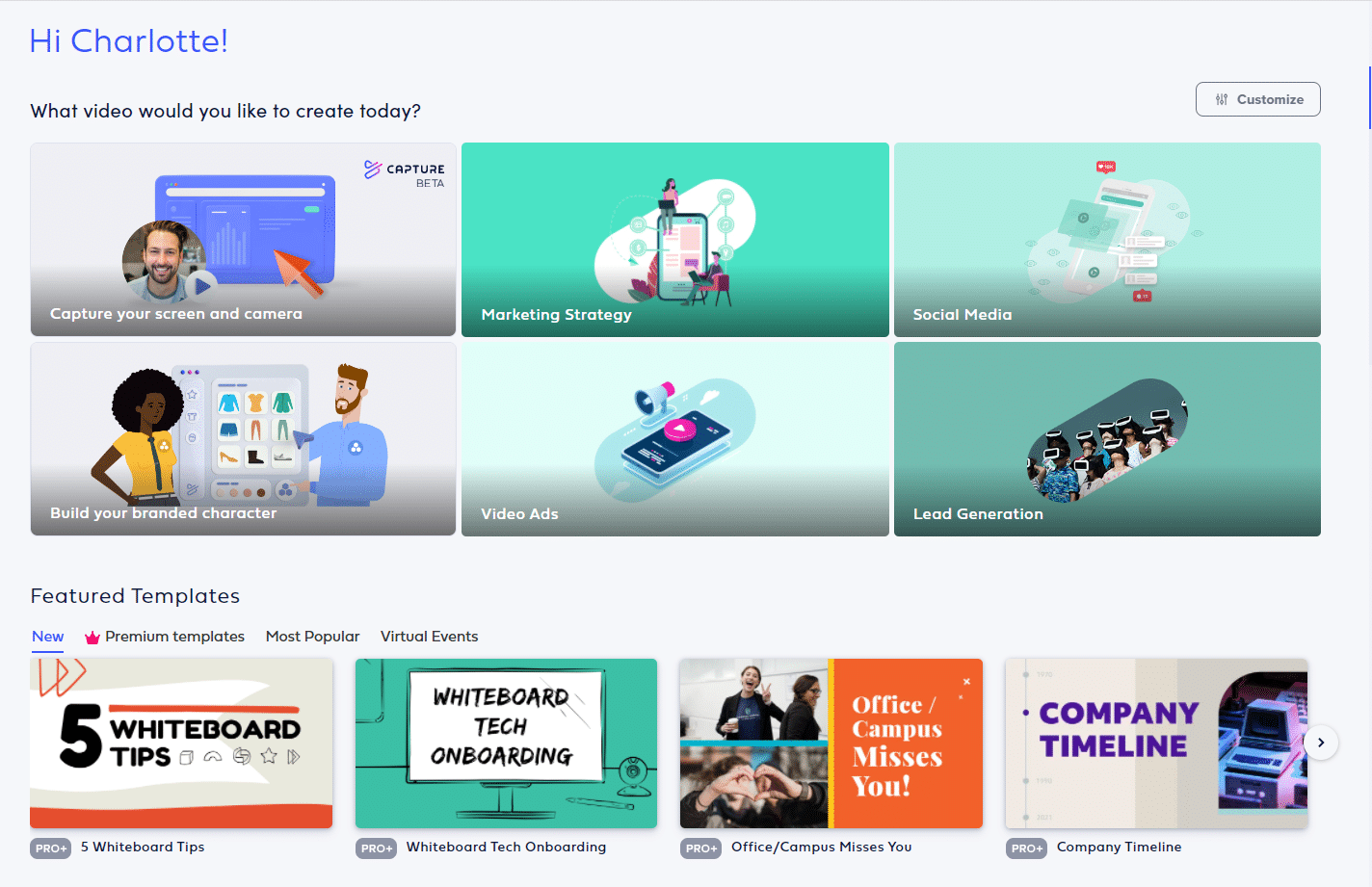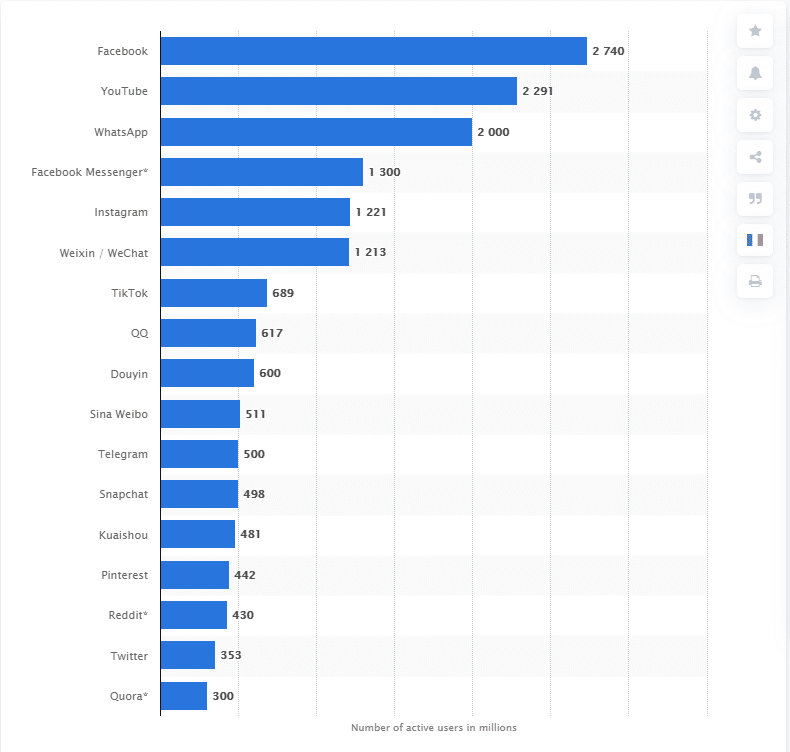Before you start placing those recruitment ads for members of a social media team, stop and think about exactly the different roles required.
If you put the wrong people in your team at the start, it can be hard to fix later. A poorly functioning social media team can also hold you back when you want to grow.
In this article, I’m looking at how to build a successful social media team from the ground up. As a founder at Contentworks marketing agency, I have had to do this myself.
Why Do You Need A Social Media Team?
Social media has evolved rapidly in the time I’ve been in marketing. Even a decade ago, you probably didn’t need a social media team. Roles like “social media analyst” just didn’t exist.
Back then we focused on adding posts to Facebook, Twitter, and Linkedin and running the occasional competition. Good times! But now, social media usage is mainstream.
So, there are more platforms, more tools, and more ways to reach your target audience. Plus, if you’re not fully utilizing social media, you can be sure your competitors do.
Build Your Social Media Squad: A 3-Point Plan
How do you decide who to add first? And what if you’re a startup or running on a tight social media budget?
Let’s take a realistic look at how to build your social media team.
1. Assess your team and resources
You want the best players for your social media team. But can you afford them? Do you need them right now?
Assessing your current situation (KPIs, budget, workforce, and resources) is an essential prerequisite to building your social media team.
I would recommend using the points below as a framework for your decision-making.
KPIs
What does your company do and what are your KPIs (key performance indicators)? If you’re a small startup selling your own products online, you might not need a team at all. You can condense your social networks down to Facebook and Instagram and manage it yourself. Later, you might look for a good all-rounder. That would be a social media manager who can also write the content you need for your channels and blog. However, if you’re an agency managing client social media accounts or a larger company, you will need to plan your squad.
Budget
Your budget can and should influence many key hiring decisions. As an agency director, I need to take responsibility for any extra payrolls, and it’s something to think about carefully.
Can your business comfortably support these additions? What if you have a few rough months? If the budget is tight, think about the key person or people you need to hire first, then plan to add more at a later stage. You could also look to utilize freelancers or part-time employees with a view to increasing their hours later. Always be transparent with new hires, and don’t make unrealistic promises.
Resources
Is your website ready? Have you got an office or remote resources in place for your team? Have you purchased the tools you need to get the job done? You need to match your current resources and structure with your hires.
For example, hiring three content writers when you just need two blog articles a week and don’t have the budget for PR is not wise. Resources also include your current workforce, even if that’s just you.
What can you manage and what do you need help with? When you recruit, take the time to learn about any other skills on offer from your candidates. A social media manager who can use Canva to create social media images and GIFs, for example, might save on a designer while you get started. A content writer who is multilingual could save you on translations.
2. The dream team
Before I start with this section, let me make it clear that no job role in this section is more important than another. These can all be integral cogs in your social media team.
But their significance and necessity will depend on your company and the resources and KPIs we discussed above.
You should be thinking about your team structure before you hire:
Is everyone reporting to you or will you put a manager in place?
Is there an authority hierarchy?
Where do you expect job roles to overlap or duties to be shared?
In large companies, marketing teams can be vast. I often see mass confusion over duties, reporting, and strategy. All that can lead to missed posts, duplicate work, and branding/ tone of voice errors.
Always document your expectations of each role and your team structure before you start.
The social media manager
Of course, the social media manager needs to come first if you are building a social media team or a social media marketing agency.
If you’re just starting out building your social media team, you should look for a good all-rounder (yes, that term again).
Probably not a specialist in paid ads or analytics, this person will understand how to strategize and manage the main networks. They will create your plan and see it through.
They are creating social content, engaging with your community, suggesting initiatives, and keeping everyone updated. The right person inserted into your team early on can later grow to manage others like community managers and social media analysts.
Hiring tip: When hiring for a social media manager, set a practical test. You can do this by creating a dummy Twitter and Facebook account and setting the individual a few tasks or challenges. The reason I do this is that in 2021 everyone is a social media expert. Except that most of the time, they’re not! You need someone who can walk the walk, not just talk the talk.
The content writer
Content is the core of your brand and its marketing efforts.
Never underestimate the importance of content writers in your organization.
In a large company, a content writer will create blogs, press releases, video scripts, and campaign text. In fact, it’s normal to have several writers and a content manager in a large organization.
If you’re just building a social media team, think about the tasks you would need from your content writer. Also, think about how this person will work with the social media manager. Is one more senior than the other?
Hiring tip:– Review previous work from potential content writers and look for creative flair, and industry knowledge. You can also set a writing test to assess their ability to research your sector or products and write a short blog. (I give bonus hiring points to writers who take the initiative to get their work published, start a blog, or collate a portfolio.)
How to get started with content marketing
The community manager
Community managers deserve all the best donuts! These heroes are responsible for monitoring, listening, and engaging with your social media communities across the different channels.
They answer questions, have chats, respond to complaints and act as ambassadors to your brand.
This person will be friendly, calm, and brand-oriented with a strong commitment to customer service. They will also ideally communicate well with your team feeding back concerns, comments, and suggestions.
Hiring tip: Often, community managers started out in customer support. Perhaps they manned support lines or live chat services. That’s a good sign because this role is largely customer service-oriented. However, you should also look for people with a good understanding of social media tools, platforms like Agorapulse for response sharing, and an ability to be organized.
The social media analyst
A social media analyst or social data analyst probably won’t be your first hire. But that doesn’t mean you won’t need them.
A social media analyst crunches your data and turns it into action items.
For example, what was the ROI of your latest campaign on Instagram? Your LTV? Your CPC? Who were your main respondents and does this align with your target audience and KPIs?
Your social media analyst can make helpful recommendations to the team and create meaningful social media reports you can show to shareholders, clients, or management.
Hiring tip: From experience, I can tell you that 99% of the time, this will not be the same person as your social media manager. A social media manager should be creative, innovative, and able to engage well with the team and fans on your channels. A social media analyst is numbers-driven, analytical, and able to access research and data.
The paid social media person
Just as the social media analyst and social media manager are usually not the same people, the organic and the paid people are often not the same.
Your paid social media specialist will take responsibility for your ads budget, ads, paid campaigns, and perhaps other paid digital like Adwords.
This role is focused on getting the best bang for your advertising buck. He or she will work closely with the social media manager and content writer to tweak the content, so it performs well. This person is not normally a writer or creative so will need other team members to be able to function.
The paid social media role is usually last to add to a team. In fact, in some teams, this role isn’t added at all, especially if the focus is on organic marketing.
Hiring tip: The paid social media person must have a deep understanding of the advertising platforms. They will be excited by running A/B tests, trialing new software, and experimenting with new techniques. When hiring for this role, assign some budget to one of your accounts. Ask the person to plan and implement a mini-campaign with specific outcomes and objectives.
Additional hires might include a designer and videographer. If you’re starting out, you can tap into excellent freelance resources on sites like Upwork, DesignHill, and Fiverr.
3. Dream Tools for the Dream Team
There’s no point in having a great team if you don’t give them great social media tools to work with. That would be like hiring the best footballer then refusing to give them a kit, football boots, or a ball!
Earlier, we discussed analyzing your budget before you start. Your budget also needs to include the social media tools your team will need.
Let’s look at the essentials.
Agorapulse
I can’t run my business without using a social media management system. At Contentworks, we use Agorapulse to manage all our client accounts.
With Agorapulse we can schedule content, view our calendar, manage replies, assign them to other team members and pull off great-looking reports. Plus, everything is in the same place.
No logging in and out of different networks, lost passwords, and multiple tabs open on your laptop.
Using a social media management system also ensures complete visibility. So, if a team member is off sick or on vacation, one of us can step in and oversee the channels. You can plug your social media manager, social media analyst, and your community manager into Agorapulse where they can utilize the inbuilt tools to do their jobs and work together.
The best thing about Agorapulse is that it’s scaleable. If you’re just starting out with your own business and up to 3 channels, you can get Agorapulse for free!

You don’t need to pay until you’re ready to access all the great features and scale up to the next level.

Social media agencies and teams can add 25 social media channels and 4 users to their dashboard. Agency Love is Agorapulse’s exclusive program built for agencies to attract more clients, improve ROI, increase revenue, and master social media management. Get a 30-day free trial and check it out for yourself.
Canva
Another scaleable tool is Canva. We started out on the free version for over a year before upgrading. That means you can get started without worrying about your budget and then grow later when it isn’t such a concern.
Canva is a social media team must have as it allows you to easily create correctly sized gifs, banners, posts, and animated stickers. There are also tons more design options to suit Stories, social media adverts, headers, presentations, and even flyers.
With Canva’s Pro and Enterprise versions, you can add the team members you need to work together. You can create a brand kit, upload your own fonts and logos and get access to tons of stock photos and videos. Canva is not a substitute for a designer. But, it will fill the void as you start out.
Even better, Canva integration is available with Agorapulse:
Powtoon
Videos make the social media world go round, but hiring a videographer is a big commitment. It’s probably something you will do later down the line once you built your team. Until then, you can check out Powtoon for videos, GIFs, whiteboard animations, and much more. The tools are quite advanced but don’t take too long to pick up and you can create really good quality videos for your channels.
You can ask your social media manager if he/she is able to use Powtoon or a similar tool and can commit to making regular videos for your channels.
Like Agorapulse and Canva, Powtoon is scaleable with prices starting from just $19 per month. That means this tool can easily slot into a startup or growing team.

When you’re building a social media team, look out for tools that are free or scaleable.
In Conclusion
The latest social media statistics show that there are 3.78 billion social media users worldwide in 2021. This number is only going to continue growing over the next few years.
An average of two hours and 25 minutes are spent per day per person on social media. That’s a missed opportunity for brands not in the space. There are now hundreds of social media platforms with at least 20 being considered highly significant by marketers.
Social media networks are added every year. Some take off and become mainstream. Others remain on the weary radars of overstretched social media managers! The latest include Clubhouse, Gab, Peanut, Caffeine, Mocospace, to name a few. More social media networks equal more resources.
Additionally, brands are now looking to reach more regions and languages than ever before. That means not only regional social media networks like China’s Baidu and QQ, but also localized content, imagery, and community management.
Below you can see the most popular social networks worldwide as of January 2021, ranked by number of active users (millions)

So, all this means you need to build a good social media team if you want your brand to take off. The same applies if you’re a social media agency aiming to provide marketing services to your clients.
Take control of your social media right now! Check out our free trial of Agorapulse to help you schedule, track, and measure all your social media efforts.
Read more: agorapulse.com










